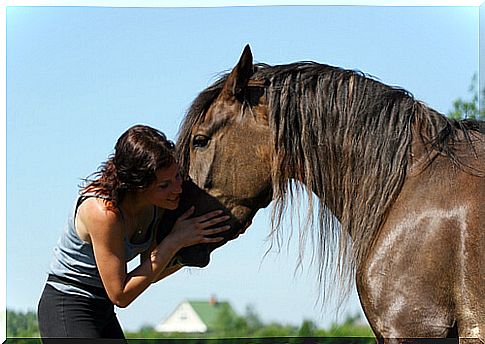The Benefits Of Equine Therapy In People With Disabilities
This rehabilitation technique on the rise seeks to improve the neuromotor, cognitive and social capacities of the participants. Discover the benefits of equine therapy and how it can help the physical and mental development of your loved ones.
What exactly is equine therapy?
According to the Spanish Association of Equine Therapies (AEE), chemotherapy is defined as the set of activities carried out with horses aimed at achieving some benefit in people’s quality of life.
There are three different sectors when it comes to horse activities:
- In the field of education we have riding schools, professional training and volunteering.
- In the field of leisure, there are recreational and sports horse riding.
- In the field of health, which is the one that interests us the most, the most important and applauded activities are hippotherapy, psychotherapy and social therapy .
Now we are going to discover the importance and benefits derived from these therapies.
Hippotherapy: the world of horses within everyone’s reach
Unlike equine therapy, hippotherapy is focused on the neurophysiological treatment of the assistants. The horse’s rhythm, together with its body heat and the swaying of its back, can help improve mobility and balance for those who need it.
This type of therapy is focused on people with physical capacity, namely:
- People with achondroplasia
- Friedrich ataxia
- Hypotonia
- Specific psychomotor retardation
- Coordination disorders
Hippotherapy helps people who do not have autonomy and who cannot ride horses on their own. At all times a physiotherapist is present, guiding and improving the rider’s posture and coordination.
Among its benefits, we find:
- Decreased spasticity, a motor disorder characterized by abnormal muscle growth that makes movement difficult for patients.
- Rider relaxation.
- Improved confidence and autonomy.
- Improved posture.
- Improved balance.
In general, the positive effects of this therapy are visible both at a neuromotor level and at a sensory, cognitive and social level.

The benefits of social equine therapy
While hippotherapy focused on the neuromotor aspect, social equine therapy seeks to treat behavior and adaptation problems of the assistants. Thanks to the animal, the capacity for communication and empathy is stimulated.
The interaction with the animal is aimed at improving self-esteem and interpersonal relationships, since the interaction with the animal calms the rider and helps him concentrate and communicate with his environment.
Horse-assisted psychotherapy and people with disabilities
The tasks of cleaning and caring for the horse allow people with disabilities to lack autonomy, reverse the assigned roles and go from being the carer to being the caretaker.
The feeling of having responsibilities and of being committed changes their perception of the world and helps them to mature, as well as to acquire a series of skills that include better manual coordination, as well as a better structuring of their day to day life.
Those who most benefit from equine therapy are those riders with Down syndrome, autism or attention deficit, among others. Family members of those affected by rare diseases or still to be diagnosed also often resort to this type of therapy, which has even led to associations of parents interested in promoting this practice, such as the Salamanca Association for Equine Therapy (ASADE).









